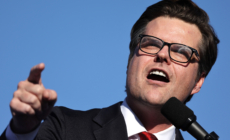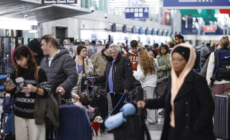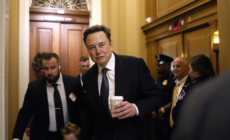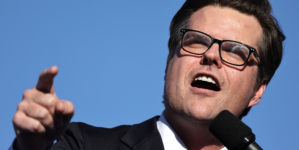-
These Spiritual Democrats Urge Their Party to Take a Leap of Faith - 16 mins ago
-
Matt Gaetz Ethics Committee Report: What to Expect in Monday’s Release - 29 mins ago
-
Visitors to Riverside’s Festival of Lights warned of parking scam - 45 mins ago
-
Letter Calling for Tracking People of Color Circulates in an Oregon County - 60 mins ago
-
Eagles’ Jalen Hurts Officially Ruled Out With Concussion - about 1 hour ago
-
Possible rain, high surf forecast for Los Angeles area in holiday week - about 1 hour ago
-
Tiger Woods Son Charlie Hits Epic Hole in One While Playing Alongside Father - 2 hours ago
-
Trump Picks a Former Treasury Official as His Top Economist - 2 hours ago
-
Winter Weather: ‘Trouble Spots’ Across US as Millions Travel for Christmas - 2 hours ago
-
Woman Dies After Being Set on Fire in Subway Car, Police Say - 2 hours ago
Barack Obama Voters Are Donald Trump Supporters Now
A surprising shift in American voting patterns has emerged as a significant number of low income non-college educated voters, who traditionally support Democrats, are now supporting Donald Trump.
According to exit poll data, the Democrats are now the preferred party of higher-income, college-educated voters, with 55 percent of college graduates and 51 percent of individuals with incomes over $100,000 voting for Kamala Harris, while Donald Trump attracted more support from low income non-college educated voters.
Exit poll data shows 56 percent of voters without a college degree voted for Trump, while 50 percent of voters with income under $50,000 supported him, compared to 47 percent who supported Harris.
This marks a significant reversal from 12 years ago when the Democratic party candidate Barack Obama enjoyed significant support from working-class low income voters without a college degree, while the Republican party candidate Mitt Romney had a solid base among wealthier, highly educated Americans.
Twelve years ago, just 35 percent of those in the lowest income bracket voted for Romney, while 63 percent voted Democrat, and 51 percent of college graduates voted Republican, while 47 percent voted for Obama.

AP
As a result, the education-income gap has rapidly increased in the last 3 decades, according to Patrick Flynn, data journalist at Focaldata.
“The Trump coalition was closer to Obama 2008 than the Harris one,” he said in a post on X.
Exit poll data also shows that Harris performed worse than her predecessor Joe Biden among working class voters, raising alarm for the Democrats.
According to NBC, among voters making less than $30,000 a year, Democrats saw a 4-point drop, from 54 percent support for Biden to 50 percent for Harris. For those earning between $30,000 and $50,000, Democratic support fell by 11 points, from 56 percent for Biden to 45 percent for Harris. Similarly, among voters earning between $50,000 and $100,000, Democrats also experienced an 11-point decline, with support dropping from 57 percent for Biden to 46 percent for Harris.
Newsweek has contacted the Trump and Harris campaigns for comment.
Following Harris’ defeat in the election, senior Democrats raised alarm about their party’s lack of appeal to working class voters.
“It should come as no great surprise that a Democratic Party which has abandoned working class people would find that the working class has abandoned them,” Vermont Senator Bernie Sanders wrote in a statement. “First, it was the white working class, and now it is Latino and Black workers as well.”
He chastised Democratic leadership for defending “the status quo” while Americans “are angry and want change.”
“Will the big money interests and well-paid consultants who control the Democratic Party learn any real lessons from this disastrous campaign? Will they understand the pain and political alienation that tens of millions of Americans are experiencing? Do they have any ideas as to how we can take on the increasingly powerful Oligarchy which has so much economic and political power? Probably not,” Sanders wrote.
Meanwhile, former Obama administration adviser David Axelrod told The Washington Post that the Democratic Party “has become a metropolitan, college-educated party.” He added that this trend is down to the Democratic party approaching working class voters in the wrong way—something that Trump has been able to exploit.
“Even though it retains its commitment to working people, it approaches them sometimes in a spirt of a missionary—that we’re here to help you become more like us,” he added. “Implied in that is disdain. I don think it’s intended, but it’s felt. And I think Trump has exploited that.”
But Patrick Flynn told Newsweek that the Democrats are also going wrong by focusing on winning over moderate Republicans instead of prioritizing the larger base of working-class voters.
“At the moment, it seems like the party is more focused on winning over this emblematic figure of the moderate Republican, who probably has a university degree, is on a high income, follows politics and watches cable news. In reality, there are not many of those people outside of Washington and the donor class. The Democrats made this strategic error under Hillary Clinton in 2016, and they’ve made it again this year,” he said.
There is only one state nationwide where college-educated voters outnumber non-college educated voters: Massachusetts. Meanwhile, college graduates only make up about 40 percent of the population, but hold about three-quarters of the wealth in the U.S., according to Federal Reserve data.
And the Democrats have not succeeded in appealing to people who are feeling the effects of the wealth divide, according to Patrick Flynn.
“The Harris campaign failed to assuage voters’ concerns around the cost of living, and most Americans thought the economy was better under Trump’s first presidency. Our pre-election polling found that among those who thought inflation/the economy were the biggest issues facing the country, Trump had a commanding lead. Harris stating that she couldn’t think of anything she would have done differently from Biden was emblematic of the campaign’s failure on this issue,” he told Newsweek.
In his newsletter, Dave Trotter, editor of Voting Trend, summed up how many see the Democrats. “The Democrats could list off jobs’ numbers and growth in the GDP but couldn’t’ tell you how much the cost of a gallon of milk was,” he wrote.
“It’s not just the cost of milk,” he added, “but also the cost of transportation, healthcare (if they are lucky enough), rent, and other necessities in life. These voters didn’t care about GDP or ‘jobs numbers,’ they cared about making sure that they could feed, clothe, and shelter their families.”
In order to address this issue, the Democrats need to “figure out a way to start speaking to those who didn’t attend Ivy League institutions, communicating in a way that resonates with most voters,” according to Flynn.
“That means recruiting more consultants, speechwriters and candidates who have come from lower-income backgrounds and might mean using some elements of Sanders-style economic populism over the coming years. The party needs to properly understand Trump’s stylistic appeal to certain groups of voters, rather than simply continuing the technocratic and occasionally aloof politics they have leaned into in recent years,” he said.
Source link




















